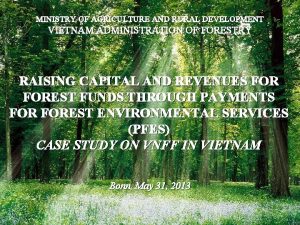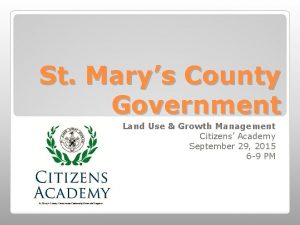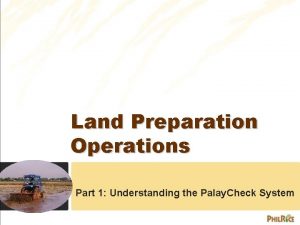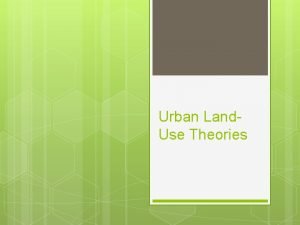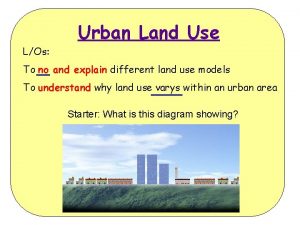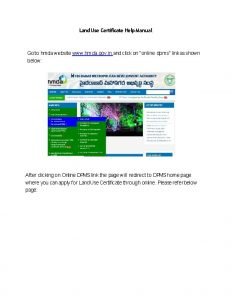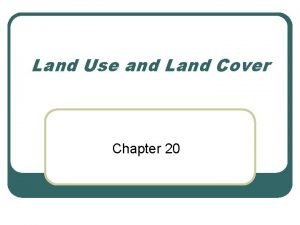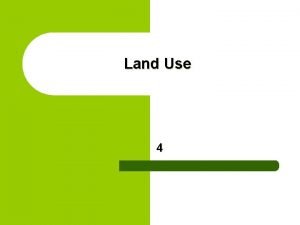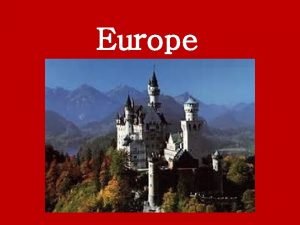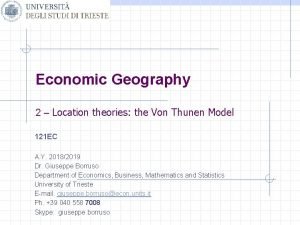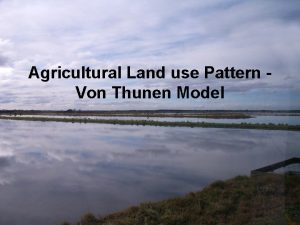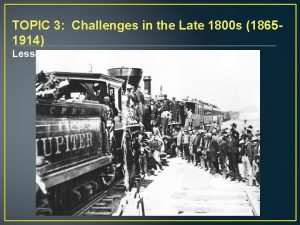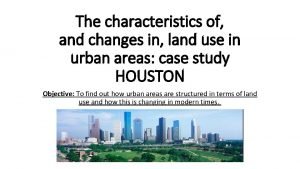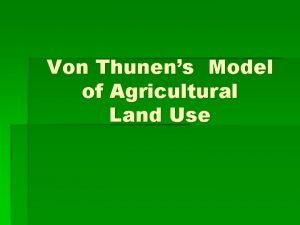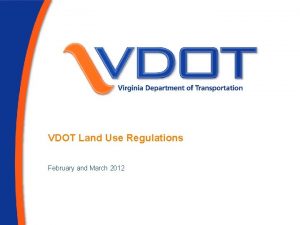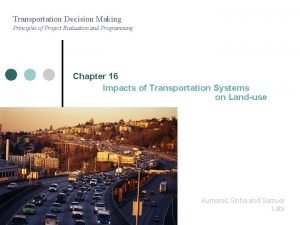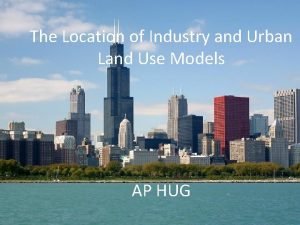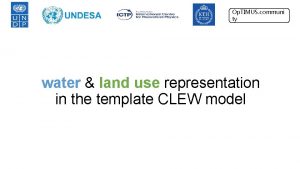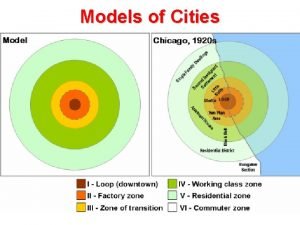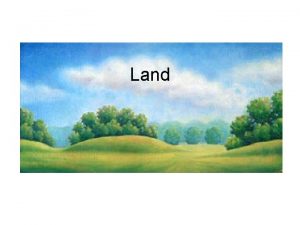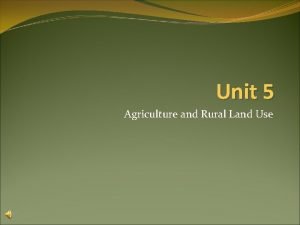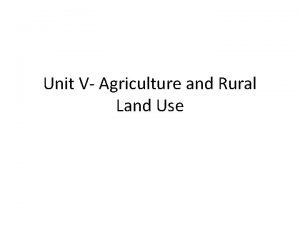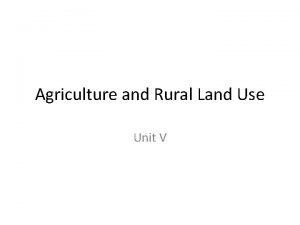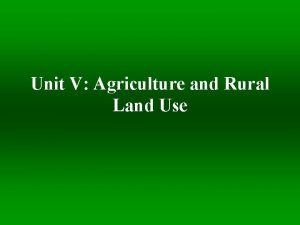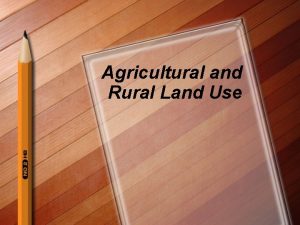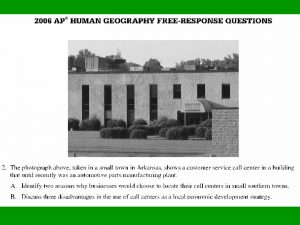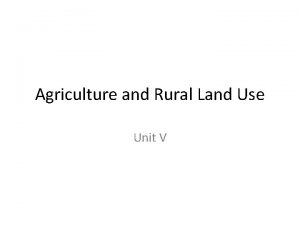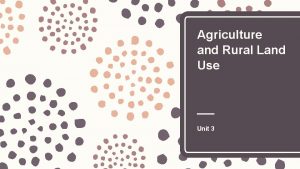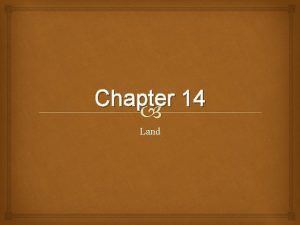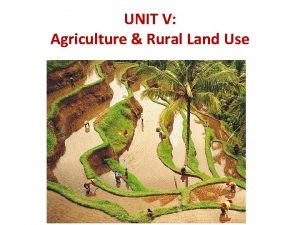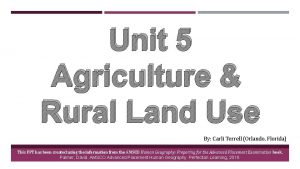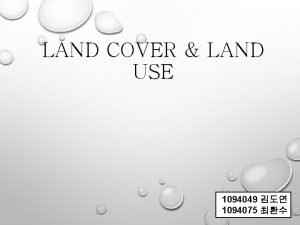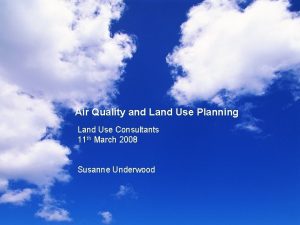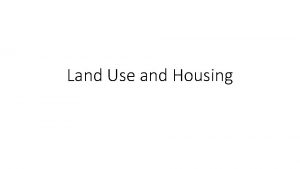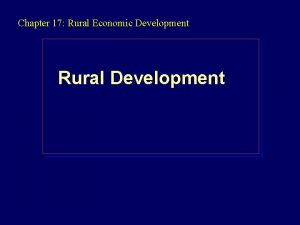Agriculture and Rural Land Use Agriculture Is the






























- Slides: 30

Agriculture and Rural Land Use

Agriculture • Is the raising of animals or the growing of crops to obtain food for primary consumption by the farm family or for sale off the farm.

The Three Agricultural Revolutions • First: allowed humans to become more sedentary and avail themselves of a more reliable source of food • Second: Used the technology provided by the industrial revolution as a means to increase production and distribution. • Third: involves altering the genetic material of plants and animals

First Agricultural Revolution • From hunting and gathering society to planting of seeds and domestication of animals. • Following of herds in a migratory pattern lead to the discovery of seeds discarded the year before eventually would sprout re-growth. This took hundreds, thousands of years after observation to harness in a way that was viable and sustainable. • Very laborious and on a small scale. • Herds would return in migratory patterns but people became sedentary. • As food sources became reliable population grew. • Animal domestication changed the worlds diet as wild animals were tamed.

First Agricultural Revolution From to

Second Agricultural Revolution • From 1750 to 1900 in more developed world. • Technology allowed for the increase in production and distribution of products. • Fields could be double or triple in size with same amount of labor. • Populations increased on local and global scales • Less developed countries are still in this era. • Examples include technological inventions of the cotton gin, forerunner, combine. • Transportation for distribution became more reliable, food less likely to spoil • Pushed population into stage 3. • People left farm for urban areas.

Second Agricultural Revolution From To

Third Agricultural Revolution • 1960 s+ • Sometimes referred to as the Green Revolution. Uses biotechnology, genetic engineering. • Takes place in labs and tested on farm fields. • Plant and animal hybrids that maximize growth and production. • Increased use of fertilizers and chemicals. • Industrial farming. • Climate is no longer barrier to plant production. • Rice is greatest example of genetic engineering as it feeds the most people in Asia. • Double-cropping, two crops per year and Triple-cropping, three crops per year is now possible in the poorest areas of Asia.

Third Cont. • Created a global agricultural market. • Wheat grown in North Dakota is shipped to Asia. • Corporate farms are where MDC’s get their food. • Enough food is produced to feed the world but there are barriers in distribution.

Third Agricultural Revolution From To

Origin of Agriculture: Vegetative Planting • Southeast Asia – Diverse climate and topography – Fishing communities lend themselves to a more sedentary lifestyle allowing for experimentation in vegetative planting – Root plants were predicted to be the first type of domesticated planting. i. e taro and yam and tree crops i. e banana and palm – Livestock such as dog, chicken, pig, (llama, sheep) – Moved east and north. – Other hearths include Central America/NW South America and West Africa


Origin of Agriculture: Seed Agriculture • Reproduction of plants through annual planting of seeds • Three hearths: western India, northern China and Ethiopia • Wheat and Barley were the dominate seed. • Often seed agriculture would include the integration of livestock


Plant and Livestock Regional Classification • Central Asia: – Plants: Rice, Millet – Livestock: sheep and goat • East Asia: – Plants: Taro, bananas, and palm – Livestock: dogs, pigs, and chicken

Plant and Livestock Regional Classification • Mexico – Plants: squash and maize – Livestock: llama, alpaca, and turkey • Peru – Plants: squash, beans and cotton – Livestock: llama, alpaca, and turkey • Central Africa – Plants: millet, sorghum, palm oil, yam, and coffee – Livestock: cattle, sheep and goat

Subsistence and Commercial Agriculture • Subsistence: – Found in developing countries – Purpose: consumption by and for farmers family. • Commercial: – Found in developed countries – Purpose: Profit

Climate and Topography • Climate and topography are the most important factors in food diversity around the world.

Whittlesey’s Agricultural Regions

Sub. V. Com. • Differences between Subsistence and Commercial Agriculture – Purpose – Percentage of farmers in labor force – Use of machinery – Farm size – Agribusiness



Purpose of Farming • LDC- personal consumption, some extra is sold to the government but goal is to eat. • MDC- grow for profit. Produce is sold off the farm. Sold to companies not persons.

% of Farmers • LDC- 55% • MDC-5% • When a country develops the percentage of farmers decreases.

Use of Machinery • LDC- hand tools and animal power. • MDC- Highly scientific. Fertilizer, herbicide, GPS used to monitor cattle.



Farm Size • LDC- 1 Hectare of 2. 5 acres, 1 acre is about 1. 5 city blocks.

Farm Size Continued • MDC- 175 Hectares (435 Acres) • 4% of commercial farms account for 50% of products. • ½ of farmers in MDC make less than $10, 000 a year in sales. • Machinery is very expensive. • Fewer farmers but more land • Losing prime agricultural land to expanding urban areas.

Business within a Business • Agribusiness—all the businesses and products that stem from farming. • Seed. • Tractors. • Distribution. • Retail • Sub: Political organizations- Free Trade
 Ministry of agriculture and rural development cameroon
Ministry of agriculture and rural development cameroon Ecotourim
Ecotourim An area of land largely enclosed by higher land
An area of land largely enclosed by higher land High rocky land usually with steep sides
High rocky land usually with steep sides Land use and growth management
Land use and growth management Land preparation activities
Land preparation activities Edcdp
Edcdp Whales use to walk on land
Whales use to walk on land Holy sector model
Holy sector model Model urban land use
Model urban land use Land use planning lecture notes
Land use planning lecture notes Apply for land use certificate hmda
Apply for land use certificate hmda Usgs land use classification
Usgs land use classification Types of land use
Types of land use Mixed land use ap human geography definition
Mixed land use ap human geography definition Bid rent theory
Bid rent theory Irrevocable rights to some limited use of another's land
Irrevocable rights to some limited use of another's land Von thunen's agricultural land use model
Von thunen's agricultural land use model Which use of western land negatively affected everyone?
Which use of western land negatively affected everyone? Characteristics of land use in urban areas
Characteristics of land use in urban areas Land use planning '' lecture notes
Land use planning '' lecture notes Flood hazard area land use management guidelines
Flood hazard area land use management guidelines Agricultural land use model von thunen
Agricultural land use model von thunen Vdot ssar
Vdot ssar Land use planning '' lecture notes
Land use planning '' lecture notes Transportation
Transportation Location
Location թիմուս
թիմուս Urban realms model
Urban realms model Define land use planning
Define land use planning Peripheral model ap human geography
Peripheral model ap human geography

